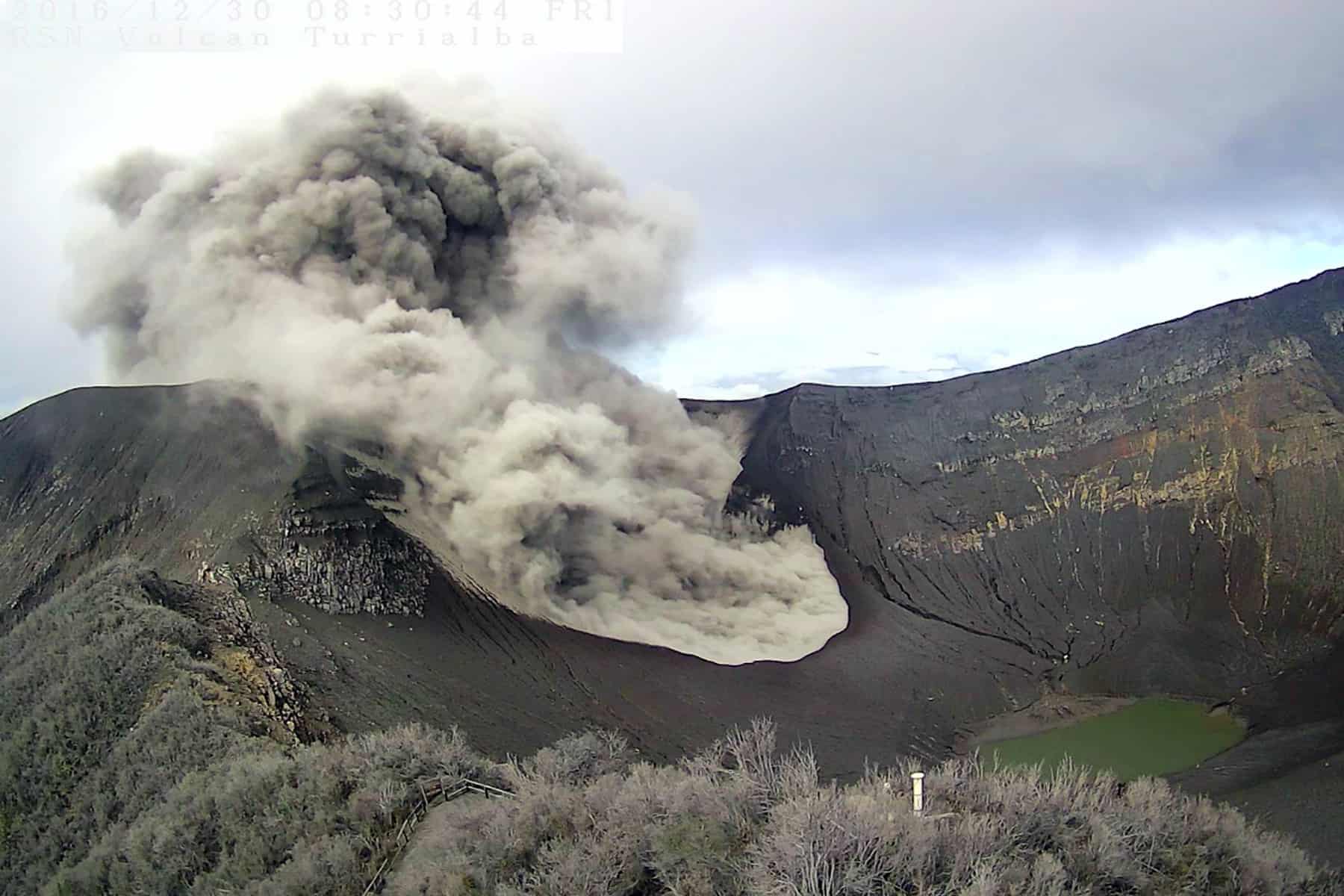Explosions and ash spewing forth from Turrialba Volcano, located some 70 Kilometers (43 miles) northeast of San José, increased this week, volcanologists from the University of Costa Rica and the National University reported Friday.
The strongest eruptions began at 11 p.m. on Thursday. Two more followed at 3:35 a.m. and at 8:01 a.m. on Friday.
The second explosion on Friday formed an ash column of approximately 300 meters (985 feet) above the volcano’s crater, according to reports from the National University’s Volcanological and Seismological Observatory of Costa Rica (OVSICORI).
Mauricio Mora, a volcanologist with the University of Costa Rica’s National Seismological Network (RSN), said in a public report that activity at Turrialba between Dec. 15 – 27 was mostly low with very low seismic activity and sporadic and weak ash spewings.
“Starting on December 28, however, we recorded an increase in seismic activity, with volcanic tremors lasting between 4-7 minutes,” he said. This spike in the activity resulted in a strong explosion at 23:00 hours that hurled incandescent rocks around the crater, Mora said.
Watch an OVSICORI video of the Dec. 28 explosion:
https://www.facebook.com/OVSICORI/videos/1184973441539912/
Winds are carrying ash
Mora said that ash plumes of up to 500 meters (1,640 ft) formed this week above Turrialba’s crater, located in northern Cartago province.
On Friday morning, strong gusts of wind took ashes to several locations across the Central Valley. People reported ashfall in Cartago and San José, and as far away as the province of Heredia.
Messages on OVSICORI and RSN’s social media profiles reported ashfall and sulfur odors in several communities in Turrialba and northern Cartago. There are also reports from San José residents in Coronado, Goicoechea, Moravia, Montes de Oca, Curridabat, Zapote, Tibás, Santa Ana and Escazú.
According to the National Meteorological Institute (IMN), the influence over Costa Rica of a cold front located in the northern Caribbean Sea increased the intensity of the trade winds starting Friday evening.
Strong gusts will continue over the weekend, particularly over mountainous areas. According to IMN forecasts, gusts could reach average speeds of up to 70 Kilometers per hour (43 mph) and maximum speeds up to 90 km/h (56 mph).
Turrialba has been active since 2014. In September, it started a new eruptive cycle with periodic ash and vapor explosions up to 4,000 meters (13,100 ft) above its crater.
Emergency agencies maintain a security perimeter of two kilometers around the volcano. However, park rangers recently reported that groups of tourists have been entering the restricted area to observe the explosions.
Recommended: Flooding, ashfall, strong winds top Costa Rica’s natural disaster list this year






